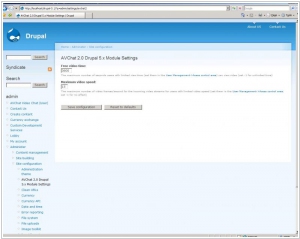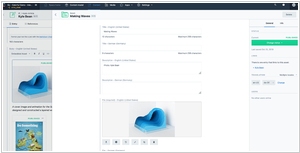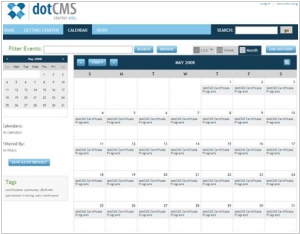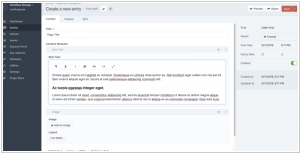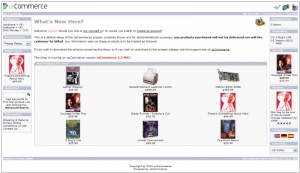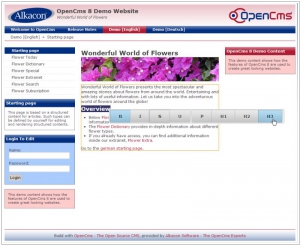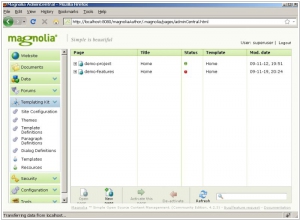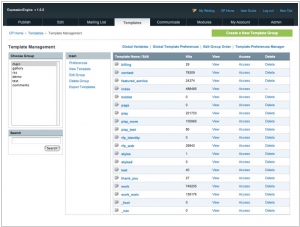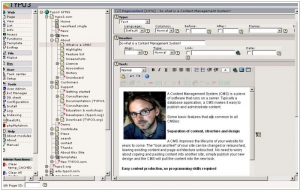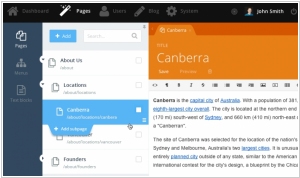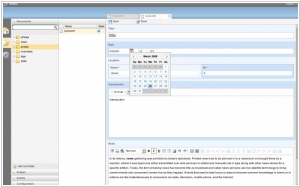Top 10 CMS systems for business websites
April 01, 2024 | Editor: Sandeep Sharma
22
Website content management systems (CMS) allow to quickly create a business website on your own hosting account and manage enterprise web content.
1
WordPress is web software you can use to create a beautiful website or blog. We like to say that WordPress is both free and priceless at the same time. The core software is built by hundreds of community volunteers, and when you’re ready for more there are thousands of plugins and themes available to transform your site into almost anything you can imagine.
2
Drupal is a free and open-source content management system (CMS) and content management framework (CMF) written in PHP and distributed under the GNU General Public License. Unlike alternatives it's often used for knowledge management and business collaboration. Because of this plug-in extensibility and modular design, Drupal is sometimes described as a content management framework.
3
Contentful is a headless content management that allows to utilize powerful orchestration of your content and tools across brands, teams, and for your commerce and marketing channels.
4
Dotcms is an Open Source Content Management System (CMS), built on leading Java technology and open standards. Take the worry out of hosting your own Content Management System (CMS). DotCMS Cloud allows you to get started quickly and scale rapidly to meet your sites' growth. Allowing you to focus on what matters most, your business.
5
Craft is a flexible, user-friendly CMS for creating custom digital experiences on the web and beyond.
6
osCommerce (“open source Commerce”) is an e-commerce and online store-management software program. It can be used on any web server that has PHP and MySQL installed. It is available as free software under the GNU General Public License.
7
OpenCms is open source content management system (CMS) based on Java and XML for public internet website, extranet or intranet. OpenCms helps content managers worldwide to create and maintain beautiful websites fast and efficiently. The fully browser based user interface features configurable editors for structured content with well defined fields. A sophisticated template engine enforces a site-wide corporate layout and W3C standard compliance for all content.
8
Joomla is a free and open source content management system (CMS) for publishing content on the World Wide Web and intranets and a model–view–controller (MVC) Web application framework that can also be used independently.
9
Magnolia CMS is an Open Source Enterprise Content Management System, Based on Best-of-Breed Java Technology And Open Standards. The Open Java CMS that runs the digital presence of your organization. Manage marketing, sales and services content for a multi-channel world. Maximize the impact of every touchpoint with Magnolia CMS.
10
ExpressionEngine’s publishing features are broad, comprehensive, and highly flexible. Both business‐ and creative‐focused folks love ExpressionEngine for different reasons. While ExpressionEngine is more than the sum of its parts, it nevertheless has some pretty amazing parts.
11
TYPO3 is a free Open Source content management system for enterprise purposes on the web and in intranets. It offers full flexibility and extendability while featuring an accomplished set of ready-made interfaces, functions and modules.
12
October is a self-hosted content management system (CMS) based on the PHP programming language and Laravel web application framework. It supports MySQL, SQLite and PostgreSQL for the database backend and uses a flat file database for the front end structure.
13
Hippo CMS is the Content Management System for creating personalized experiences across all channels. Hippo’s open standards philosophy makes it the ideal solution for agile development and open integration. Editors love Hippo because it's easy to use and helps them get their work done quickly and efficiently. Marketers love Hippo because they can roll out and manage channels simply - and increase conversion with targeting and personalization.
Latest news about CMS systems for business websites
2023. Automattic launches an AI writing assistant for WordPress
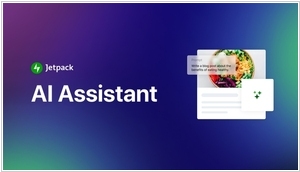
Automattic has introduced an AI assistant for the widely used content management system Wordpress.com. Now, when composing a post or page, users have the option to incorporate an "AI Assistant" block into their content. By inputting prompts in natural language, users can avail themselves of the AI assistant's text generation capabilities. Beyond providing content suggestions, the AI assistant can facilitate the creation of organized lists and tables within blog posts. Additionally, it has the ability to adjust the tone of a post, adding elements of informality, skepticism, humor, confidence, or empathy. The assistant can also generate post summaries and propose suitable titles. Initially, the Jetpack AI Assistant block offers a complimentary trial allowing users to submit 20 requests. Subsequently, a subscription fee of $10 per month is required to access this feature.
2022. Storyblok raises $47M to build out its headless CMS
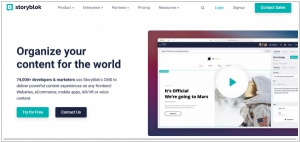
Storyblok, a startup, has successfully raised $47 million in funding. Storyblok has developed a headless CMS that caters to both technical and non-technical users, such as marketers. It enables them to effectively manage content across various digital interfaces, including websites, apps, and other platforms utilized by publishers in education, commerce, gaming, and more. The newly secured funding will be utilized to further enhance the functionality of Storyblok's CMS platform. The company's tools are already employed by over 74,000 companies, including prominent names such as Netflix, Adidas, T-Mobile, Happy Socks, and Deliveroo. Collectively, these companies have implemented approximately 120,000 projects utilizing Storyblok, encompassing tasks such as regularly updating website content, creating side-quests in games, implementing advertising features in apps, and much more.
2020. Contentful raises $80M for its headless CMS
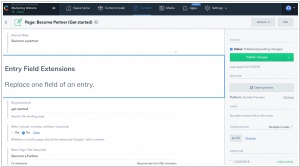
The headless CMS company, Contentful, has secured $80 million in Series E funding. Currently, Contentful is utilized by 28% of the Fortune 500 companies to effectively manage their content across various platforms. With a current customer base of 2,200 paying clients, notable organizations such as Spotify, ITV, the British Museum, Telus, and Urban Outfitters have chosen Contentful as their preferred CMS solution.
2019. Ghost CMS adds SaaS subscription

Ghost, the open-source CMS, is set to introduce subscription features in Ghost 3.0, marking a significant milestone for the platform that has been in existence for a few years. These new features will be available in both the self-hosted version of Ghost and the paid, hosted SaaS product offered by the organization. With Ghost 3.0, publishers will have the ability to seamlessly integrate the CMS with Stripe, a payment processor supporting credit card transactions and Apple Pay. It's worth noting, and something CEO John O'Nolan stressed during our conversation, that Ghost will not impose an additional transaction fee on publishers (although Stripe's standard fees will still apply). This sets Ghost apart from its competitors, many of whom adopt a business model that involves taking a substantial portion, often 10% or more, of a publisher's revenue.
2018. dotCMS Launches dotCMS 5.0 – Developed with ‘NoCode’ Philosophy

dotCMS, a prominent vendor of open-source Java CMS and Customer Experience Management software, has unveiled the latest version of their product, dotCMS 5.0. This update introduces a range of UI/UX features aimed at enhancing the authoring experience. The Edit Mode has been refreshed, and new reporting capabilities have been implemented, along with improvements in search functionality and security measures. Notably, layouts are now directly associated with the page, allowing for convenient modifications without leaving the page editor. The new Workflow Builder enables the creation of multiple workflow schemes per content type, while the Content Type Builder facilitates the creation of content types through intuitive drag-and-drop functionality. The addition of rows, columns, and the ability to rearrange fields simplifies the development of new content types, particularly for forms. Another noteworthy enhancement is the ability to reuse containers multiple times on a single page, reducing the need for numerous templates and facilitating template, layout, and container management. Additionally, dotCMS 5.0 introduces a new reporting module that integrates with Google Analytics, enabling businesses to obtain valuable website insights directly from the dotCMS Dashboard. This reporting module can be customized to display the most relevant insights for individual business requirements, providing a comprehensive visualization of web properties.
2016. Kentico CMS released cloud version
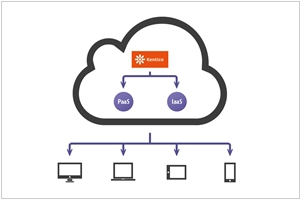
Kentico, the provider of web content management and digital experience platform, has introduced Kentico Cloud, a multi-tenant SaaS offering with an "API-first" approach. Kentico Cloud consists of three key components: Kentico Draft for content authoring, Kentico Deliver for content delivery through an API, and Kentico Engage for marketing and experience optimization. These components can be licensed separately or as a bundled package, and the pricing structure is tiered based on usage. Notably, Kentico offers a free version for micro clients or experimentation, allowing access without the need for a credit card.
2016. E-commerce platform BloomReach acquired Hippo CMS
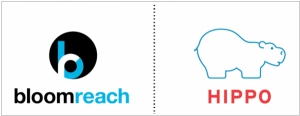
BloomReach, the e-commerce personalization platform powered by artificial intelligence, has completed the acquisition of Hippo, a provider of open-source enterprise content management solutions. Through this strategic partnership, BloomReach aims to offer a unified personalization platform that delivers highly relevant and tailored experiences to consumers while driving increased profitability for businesses. Over the years, Hippo has evolved from being solely focused on web content management to becoming a comprehensive digital experience and performance platform that analyzes both visitor and anonymous user data. By integrating BloomReach's machine-learning engine with Hippo's Java-based CMS technology, the combined solution will harness data and algorithmic intelligence to create personalized digital experiences for users.
2016. Hippo released on-demand Web CMS
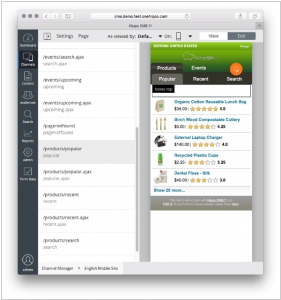
The open-source web content management provider, Hippo, has introduced Hippo onDemand, a solution aimed at transforming digital business ecosystems into dynamic and adaptable digital experiences while harnessing the advantages of cloud technology. Users of this platform gain access to the complete Hippo enterprise stack, which includes features such as cross-channel capabilities and personalization, all within a Platform-as-a-Service (PaaS) framework. Sonja Kotrotsos, Hippo's director of product marketing, highlights the platform's ability to provide a ready-to-use cloud environment that eliminates the need for time-consuming custom builds or complex workarounds commonly associated with inflexible cloud CMS platforms. Hippo onDemand facilitates build freedom and flexibility through an open REST API-driven microservices architecture. It supports seamless integration with third-party data and business solutions while scaling to accommodate cross-channel expansion, as emphasized by company officials.
2016. WordPress.com turned on HTTPS encryption for all sites
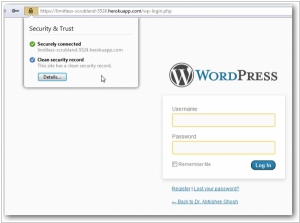
WordPress.com is implementing automatic HTTPS support for all its sites, requiring no user action. Each website is now equipped with an SSL certificate, which is indicated by a green lock in the address bar. Besides the heightened security, this improvement has the added benefit of Google's preference for HTTPS-supported websites over those limited to HTTP. Consequently, your WordPress.com website is expected to achieve higher rankings in Google search results.
2016. Distributed content management system Contentstack launched of a set of mobile SDKs
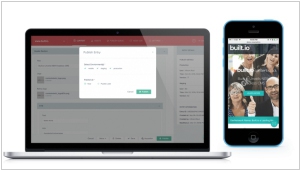
The enterprise-focused headless content management service (CMS), Built.io Contentstack, is undergoing a significant upgrade today. The update introduces a set of mobile software development kits (SDKs) for Android and iOS, alongside a revamped interface designed for both developers and content editors. The concept behind a headless CMS is to address the fact that content is now distributed across various platforms. Rather than using a traditional CMS that manages both content creation and presentation, a headless CMS solely concentrates on content creation. Developers can then seamlessly integrate this data across diverse platforms. This update reinforces Built.io Contentstack's position as a competitor to established CMS platforms like WordPress and Drupal in the enterprise market.
2015. Kentico CMS 9 is released
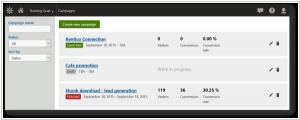
The ASP.NET content management platform, Kentico, has recently unveiled version 9 of its web content management system (Web CMS). This latest release introduces various enhancements designed to accelerate website deployment for marketers and developers, simplify the creation of personalized content for content editors, and gather more intelligent insights from campaigns. Notable improvements include continuous integration, which reduces the reliance on manual deployment, an integrated campaign management control panel, optimized support for cloud deployments using ASP.NET model view controller (MVC), enhanced web farm support, and modularization capabilities that enable users to write code across modules and transfer modules between projects.
2015. WordPress.com goes Open Source and gets a desktop app

The fully hosted version of WordPress, known as WordPress.com, has recently undergone a significant update. The first major change is the complete separation of WordPress.com from the WordPress core. It now functions as an admin interface that interacts with the WordPress core similar to other third-party interfaces and apps. This is achieved through the utilization of a REST API, enabling tasks such as fetching posts, publishing new content, and uploading photos. Secondly, the WordPress.com development team has transitioned to an entirely new stack. Instead of relying on PHP and MySQL, they have built the platform using JavaScript and API calls. Consequently, when accessing the website, the server distributes a fully functional WordPress client that primarily runs within the user's browser. Lastly, the entire system is open source and hosted on GitHub. Additionally, a new Mac app is available for download, offering an alternative way to access WordPress.com. Similar to the Slack desktop app, it harnesses web technologies and desktop features to provide users with a comparable experience to the WordPress.com website, along with extra features like notifications. Windows and Linux apps are currently in progress and will be released in the future.
2015. Drupal 8 is released
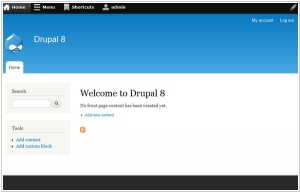
Drupal has finally released the highly anticipated Drupal 8.0 platform, which introduces a range of exciting features and improvements. These include in-context editing and previews, allowing users to see a real-time representation of their content as they edit it. The platform also provides comprehensive content modeling capabilities, incorporating entities, fields, and views right from the start. Users can easily customize content pages, forms, and administrative pages using the intuitive administrative interface. Additionally, Drupal 8.0 offers built-in support for multilingual content and localization, ensuring that websites can be easily translated and adapted to different languages and regions. The platform includes configuration management, enabling seamless deployment of changes between different environments. It adopts a mobile-first approach, ensuring that websites are responsive and optimized for mobile devices, while also delivering HTML5 output. Drupal 8.0 supports native web services, allowing easy integration with other applications and systems through REST. The platform prioritizes accessibility and compliance with WAI-ARIA standards, ensuring an enhanced experience for users with disabilities. It follows modern PHP standards and practices, incorporating popular libraries like Composer, Symfony2, Guzzle, and Twig. Drupal 8.0 focuses on front-end performance, offering improved caching and seamless integration with CDNs and reverse proxies. Furthermore, the platform is fully compatible with PHP7 and supports both PostgreSQL and SQLite databases. Overall, Drupal 8.0 represents a significant advancement in functionality, performance, and flexibility for web developers and content creators.
2015. Hippo CMS moves from collaboration to marketing
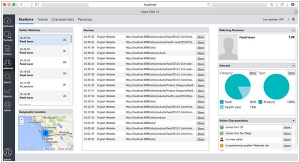
Hippo has unveiled the latest version of its content management platform, Hippo CMS 10. This new release marks a significant transition for Hippo, as it evolves from being primarily a productivity-focused foundation technology to a solution that emphasizes driving return on investment (ROI) through content performance. With Hippo 10, marketers gain a higher level of accountability regarding their utilization of content management and its impact on the bottom line. According to Hippo, a significant portion of content engagement occurs with anonymous users. Therefore, understanding their browsing behavior becomes crucial in order to effectively convert them. This is precisely what Hippo 10 aims to achieve. Rather than solely relying on traditional web analytics and analyzing individual content pieces, the new solution enables marketers to identify patterns and correlations between visitor behavior and demographics. This shift empowers marketers to prioritize their customers and focus on conversion strategies, moving beyond mere content-centric approaches.
2015. WordPress acquired e-commerce plugin WooCommerce

Automattic, the company responsible for WordPress, has made an acquisition by acquiring WooCommerce, the developer of a highly popular e-commerce WordPress plugin. This plugin enables website owners to effortlessly transform their self-hosted WordPress sites into fully functional online stores. With a staggering presence in the online store landscape, WooCommerce powers a substantial number of over 650,000 online stores. While WooCommerce offers user-friendly features, especially compared to other e-commerce solutions, it still requires some assistance during the initial setup process. The demand for easy-to-use shopping solutions is increasingly becoming a key selling point for web-based platforms. Competitors of WordPress.com, such as Squarespace, have integrated storefront modules, and other companies like Shopify, Big Cartel, and Bigcommerce offer hosted solutions to cater to this growing market.
2015. Hippo CMS integrates with Documentum

EMC and Hippo have officially announced a partnership today that involves the integration of Hippo CMS, an open-source web content management platform (Hippo CMS), with EMC Documentum, EMC's enterprise content management software (EMC Documentum). This collaboration allows EMC to enhance its content management capabilities without significant financial investments, while providing Hippo with access to a wider enterprise market and the ability to integrate with other tools within the EMC portfolio. Importantly, Hippo maintains its independence throughout this partnership. For EMC Documentum, a well-established brand striving to combat disruption in the content management market, the addition of Hippo offers a contemporary, open-source web content management solution specifically designed to assist users in effectively managing customer experience.
2015. Open source CMS Jahia raises $22.5M
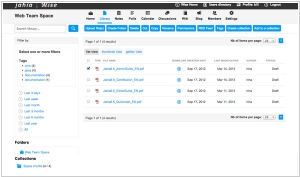
Switzerland-based open source content management system (CMS) vendor Jahia has secured a $22.5 million investment to fuel its growth. The funds will primarily be utilized to expand Jahia's customer base, particularly in the enterprise sector. Furthermore, the investment will support the further development of Jahia's user experience platform and enhance its integration capabilities with third-party platforms. According to Gartner's recent Magic Quadrant for Horizontal Portals (registration required), Jahia was recognized as a Niche player for its Java platform that seamlessly combines Web CMS, document management, and portal functionalities. Gartner highlighted Jahia as one of the few vendors offering a unified portal and Web CMS, specifically designed to provide enterprises with flexibility for building and scaling portals, websites, and applications. Moreover, Gartner noted that Jahia's platform delivers exceptional value compared to many other vendors in the market.
2014. WordPress, Squarespace offer website CMS for Google Apps customers

Website CMS providers, WordPress and Squarespace, have recently become part of the Google for Work Partner Program, offering users access to two highly flexible content management systems (CMS) tailored for small businesses. The Google for Work Partner Program already includes website building services such as Wix, Weebly, and Bluehost. The program's core services encompass popular tools like Gmail, Hangouts, Calendar, Google+, Drive, Docs, Sheets, Forms, Slides, Sites, Admin, and Vault. The integration of Squarespace and WordPress with Google for Work provides users with user-friendly content management solutions, efficiently addressing their daily requirements. Furthermore, the integration process with these platforms is made simple through the availability of APIs, enabling seamless incorporation of Google Apps into their interfaces.
2014. Microsoft makes scaling WordPress on Azure easier
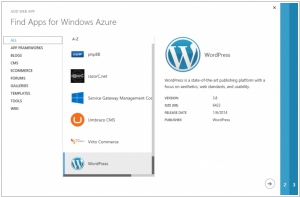
WordPress is widely recognized as one of the leading web content management systems for the Enterprise. However, when it comes to scaling up for high-traffic websites, it can pose challenges. To address this, Microsoft has been providing the option to effortlessly establish a WordPress site using Azure Websites. Now, Microsoft takes it a step further by introducing a highly scalable solution. Azure users can navigate to Azure's App Gallery and deploy what Microsoft refers to as "Scalable WordPress." This process involves a few simple clicks, setting up Azure Storage to store all media assets, and granting access to a curated collection of performance-optimized WordPress plugins. Unlike the standard WordPress installations on Azure, this solution utilizes a higher-end (and pricier) MySQL database. WP Engine and Pantheon are among the recent entrants in offering specialized WordPress hosting services. Unlike Azure, these platforms provide a fully managed service. Nonetheless, Microsoft aims to attract businesses that are capable and willing to manage their own WordPress installations by simplifying the setup of a scalable version on its platform.
2014. Magnolia CMS will power creative marketing campaigns
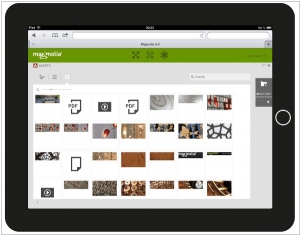
Popular enterprise open source content management provider Magnolia CMS has formed a partnership with European digital marketing platform ETECTURE@Ogilvy, enabling digital marketers to execute creative campaigns effectively. According to Daniel Menges, Managing Partner in Technology for ETECTURE@Ogilvy, the collaboration aims to enhance the integration of digital marketing with clients' IT and operations. E@O has chosen Magnolia as the preferred tool to achieve this goal in the future. Clients are not obligated to integrate any specific elements, but they have the flexibility to integrate whichever components they desire or require. E@O has successfully completed all cloud integration necessary to operate and scale on Amazon, employing innovative scripts developed by their team.


